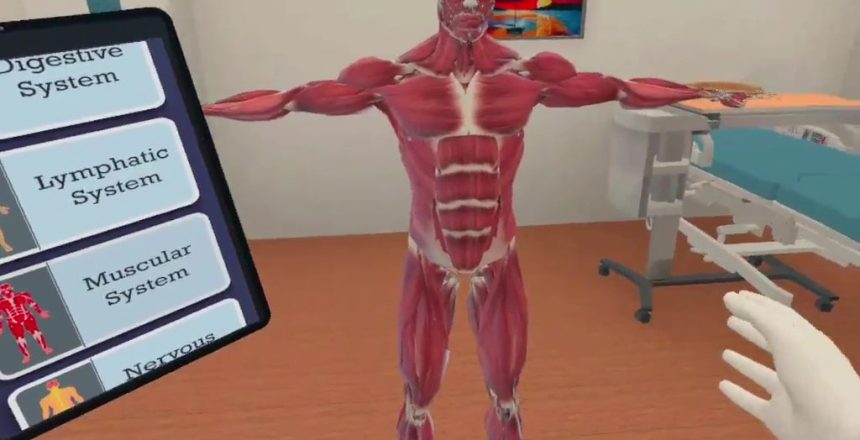Overview of the Project:
An immersive and interactive virtual reality (VR) solution created by Twin Reality is the Virtual Reality for Medical Education project, which is intended to improve medical education and training.
The project’s goal was to develop a believable and captivating virtual world where medical professionals and students may study and practice different medical procedures while honing their knowledge and abilities in a secure atmosphere.
Who We Created This For and Their Issues.
The Virtual Reality for Medical Teaching project was established primarily for medical schools, universities, and training facilities that encountered a number of difficulties with their conventional medical teaching techniques, such as:
- Limited Access to Real Patient Cases:
During their study, medical students frequently had little access to actual patient cases, which caused a disconnect between their academic understanding and practical application. Their capacity to acquire clinical decision-making abilities and self-assurance in carrying out medical operations was hampered by this. - High-Risk Training Scenarios:
Both patients and students ran the risk of harm when undergoing certain medical procedures, such as surgical interventions or emergency simulations. Such circumstances were hard to come by, and training mistakes may have serious repercussions. This limited the opportunity for medical professionals and students to receive hands-on instruction. - Expensive Simulation Equipment:
Equipment for high-fidelity medical simulation, including anatomical models or simulators, was frequently expensive. Due to this, such technology was less accessible and available, especially for universities with little funding.
Use Cases of the Project:
The Virtual Reality for Medical Education project offers a number of use cases to help medical education institutions overcome their difficulties:
- Realistic Medical Procedure Simulations:
The virtual reality platform offers accurate simulations of different medical operations, enabling students to hone their abilities in a controlled setting. Without the dangers involved with working on actual patients, students can practice procedures including surgery, patient exams, and diagnostic testing. - Access to Diverse and Challenging Cases:
Medical practitioners and students may access a variety of patient cases through virtual reality, including uncommon and complex situations that are challenging to encounter in real-world settings. By going through various medical scenarios, students may hone their diagnostic and therapeutic abilities, enhancing their capacity to manage a variety of patient circumstances. - Immersive Learning Experience:
A multisensory, immersive learning experience is provided by the virtual setting. Students may engage with virtual patients, view anatomical components in 3D, and get immediate feedback on their choices. This improves learning outcomes by improving information retention, spatial comprehension, and general engagement. - Cost-Effective Training Solution:
An affordable replacement for pricey simulation equipment is the virtual reality platform. While still providing their students with high-quality and varied training situations, institutions may lessen the cost burden involved with buying and maintaining physical simulators.
Conclusion:
The issues presented by medical education institutions were effectively handled by Twin Reality’s Virtual Reality for Medical Education initiative.
The platform gave medical professionals and students a realistic and immersive learning environment by utilizing virtual reality technology.
This allowed them to practice medical procedures, access a variety of case studies, and improve their practical abilities in a secure environment.
By bridging the gap between theory and practice, increasing access to training scenarios, and offering institutions a cost-effective option, the initiative demonstrated how VR has the potential to revolutionize medical education.
The Virtual Reality for Medical Education platform gives students the tools they need to enhance patient outcomes, sharpen their clinical decision-making abilities, and progress their medical careers.
The accomplishment of this research demonstrates the revolutionary power of virtual reality in the area of medical education, influencing medical education in the future and advancing medical procedures.

